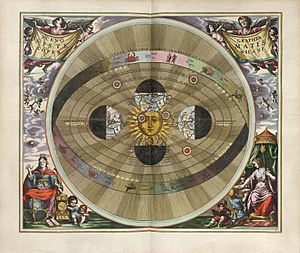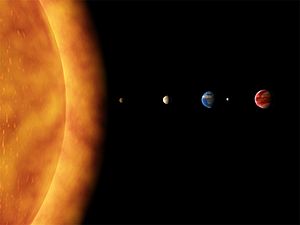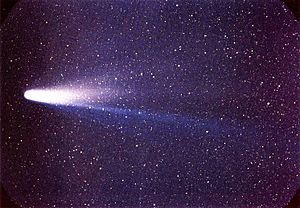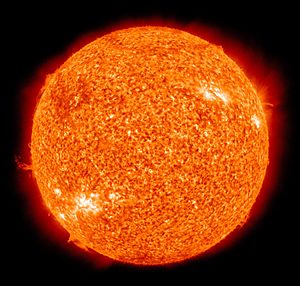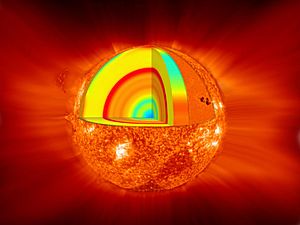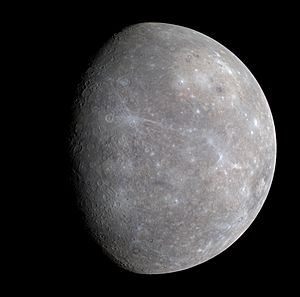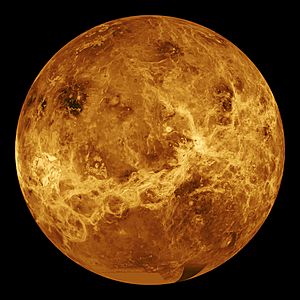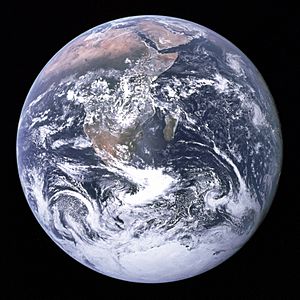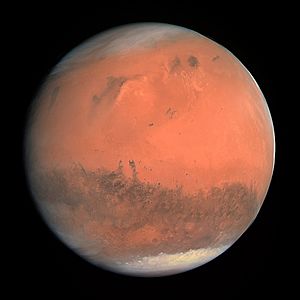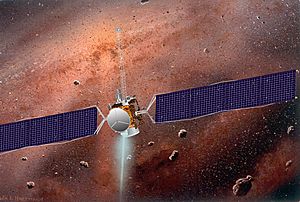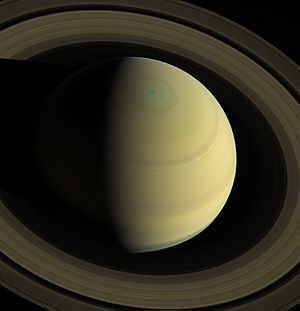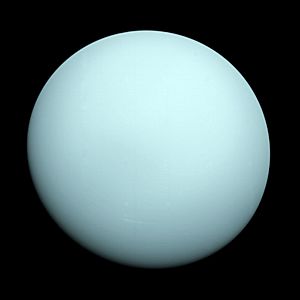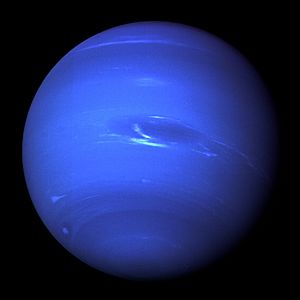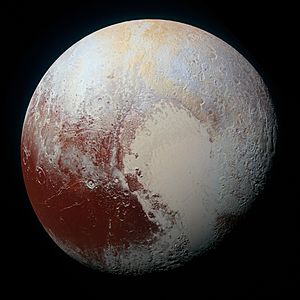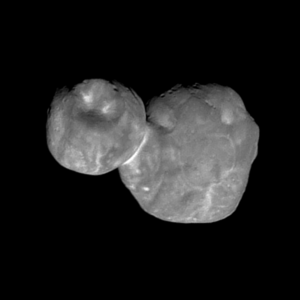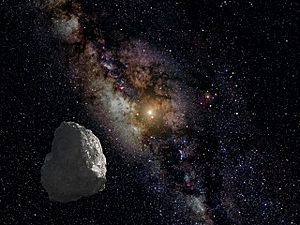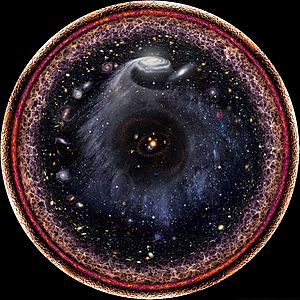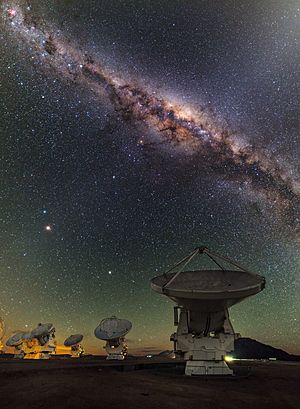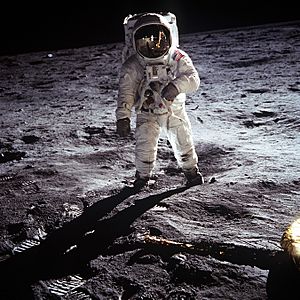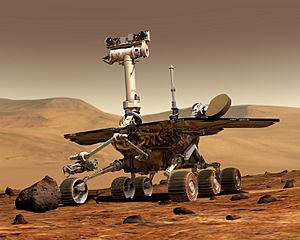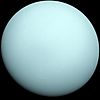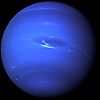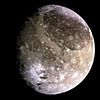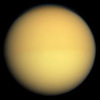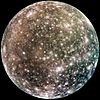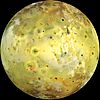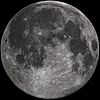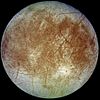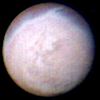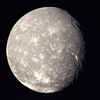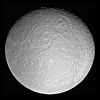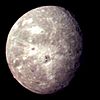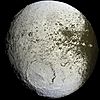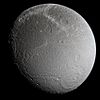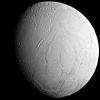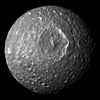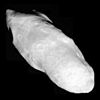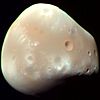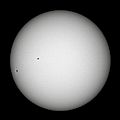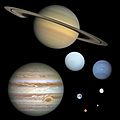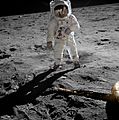Solar System facts for kids
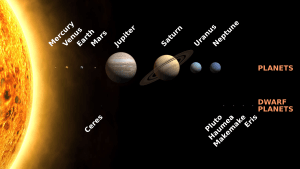
Planets and dwarf planets of the Solar System. Sizes are to scale. Distances from the Sun are not to scale.
|
|
| Age | 4.568 billion years |
|---|---|
| Location | Local Interstellar Cloud, Local Bubble, Orion–Cygnus Arm, Milky Way |
| System mass | 1.0014 solar masses |
| Nearest star | Proxima Centauri (4.22 ly), Alpha Centauri system (4.37 ly) |
| Nearest known planetary system | Alpha Centauri system (4.37 ly) |
| Planetary system | |
| Semi-major axis of outer planet (Neptune) | 4.503 billion km (30.10 AU) |
| Distance to Kuiper cliff | 50 AU |
|
Populations
|
|
| Stars | 1 Sun |
| Planets | 8 Mercury, Venus, Earth, Mars, Jupiter, Saturn, Uranus, Neptune |
| Known dwarf planets | 5 (dozens more awaiting confirmation, possibly hundreds) Ceres, Pluto, Haumea, Makemake, Eris |
| Known natural satellites | 406 (176 of planets and 230 of minor planets) |
| Known minor planets | 597,599 |
| Known comets | 3,175 |
| Identified rounded satellites | 19 |
| Orbit about Galactic Center | |
| Invariable-to-galactic plane inclination | 60.19° (ecliptic) |
| Distance to Galactic Center | 27,000±1,000 ly |
| Orbital speed | 220 km/s |
| Orbital period | 225–250 Myr |
| Star-related properties | |
| Spectral type | G2V |
| Frost line | 2.7 AU |
| Distance to heliopause | ~120 AU |
| Hill sphere radius | ~1–2 ly |
The Solar System is made up of the Sun and all the objects that orbit (travel around) it. These objects include planets, asteroids, comets, and many other things.
Our Solar System is about 4.6 billion years old. It began when a huge cloud of gas and dust collapsed because of gravity. Most of this material formed the Sun in the middle. The rest flattened into a spinning disk, which eventually became the planets and other objects we see today.
The Sun is a star. It holds almost all the mass of the Solar System (99.9%). This huge mass gives it very strong gravity, which pulls everything else into orbit around it. The Sun is mostly made of hydrogen and helium gas.
There are eight planets in our Solar System. Starting from the closest to the Sun, they are: Mercury, Venus, Earth, Mars, Jupiter, Saturn, Uranus, and Neptune.
The first four planets (Mercury, Venus, Earth, Mars) are called terrestrial planets. They are mostly made of rock and metal and have solid surfaces. The last four planets (Jupiter, Saturn, Uranus, Neptune) are called gas giants. They are much larger and are mostly made of gas.
The Solar System also has other interesting objects. There are asteroid belts, mainly between Mars and Jupiter. Beyond Neptune, you'll find the Kuiper belt and the scattered disc. These areas contain dwarf planets like Pluto, Haumea, Makemake, Ceres, and Eris. There are also thousands of tiny objects, comets, and interplanetary dust.
Six of the planets and three of the dwarf planets have moons orbiting them. Many other systems like ours have been found around other stars. It's thought that most of the billions of stars in the Milky Way galaxy might have their own planets.
Contents
- How the Solar System Formed and Changed
- Earth's Path Around the Sun
- How We Discovered and Explored Space
- What the Solar System is Made Of
- The Sun: Our Star
- The Inner Planets
- The Outer Planets
- Dwarf Planets
- Beyond Neptune: The Trans-Neptunian Region
- The Farthest Regions of the Solar System
- Our Place in the Galaxy
- Exploring Our Solar System
- Visual Summary
- Images for kids
- See also
How the Solar System Formed and Changed
The Solar System started forming 4.6 billion years ago. It began with the collapse of a small part of a giant cloud of gas and dust.
Most of this collapsing material gathered in the center, creating the Sun. The rest flattened into a spinning disk of dust. From this disk, the planets, moons, asteroids, and other objects in the Solar System were formed.
This idea is called the nebular hypothesis. Scientists like Emanuel Swedenborg, Immanuel Kant, and Pierre-Simon Laplace developed it in the 1700s. As we learn more about space, this model is updated with new discoveries.
Our Solar System has changed a lot since it first formed. Many moons grew from disks of gas and dust around their planets. Some moons might have been captured by their planets later. Others, like Earth's Moon, may have formed from huge crashes.
Many collisions between space objects have happened. These crashes were important for how the Solar System changed. In the early days, the planets sometimes moved from their original positions. This shifting of planets, called planetary migration, helped shape the Solar System.
Earth's Path Around the Sun
The Earth's orbit around the Sun is almost a perfect circle. But if you look closely, it's actually a slightly oval shape. This oval path is called an elliptical orbit.
All the other planets in the Solar System also orbit the Sun in slightly elliptical paths. Mercury has a more oval-shaped orbit than the others. Some smaller objects have very eccentric orbits, meaning they are much more stretched out.
How We Discovered and Explored Space
For thousands of years, people thought Earth was the center of everything. This idea was called geocentrism. The Greek philosopher Aristarchus of Samos suggested a different order. But Nicolaus Copernicus was the first to create a mathematical system showing that planets orbit the Sun. This was a new "system of the world."
In the 1600s, scientists like Galileo Galilei, Johannes Kepler, and Isaac Newton helped us understand physics better. People started to accept that Earth is a planet moving around the Sun. They realized that the same physical laws that work on Earth also control other planets.
More recently, telescopes and space probes have led to amazing discoveries. We've found mountains and craters on other planets. We've also seen seasonal weather like clouds, dust storms, and ice caps.
What the Solar System is Made Of
The most important part of the Solar System is the Sun. It's a star that holds 99.86% of the system's known mass. This means it controls everything with its gravity.
The Sun's four largest orbiting bodies are the giant planets. They make up 99% of the remaining mass. Jupiter and Saturn alone account for over 90% of that. All the other objects combined (the four terrestrial planets, dwarf planets, moons, asteroids, and comets) are less than 0.002% of the total mass.
All the planets and most other objects orbit the Sun in the same direction that the Sun spins. This is counter-clockwise if you look down from above Earth's north pole. There are a few exceptions, like Halley's Comet.
Most planets in the Solar System have their own systems of moons. Two of these moons, Titan and Ganymede, are even bigger than the planet Mercury. The four giant planets also have planetary rings. These are thin bands of tiny particles that orbit them together.
The Sun: Our Star
At the very center of the Solar System is the Sun. It is a star, just like the billions of other stars you see in the night sky.
The Sun is super important for us because it gives us heat and energy. Without the Sun, life on Earth would not be possible.
All the other objects in the Solar System orbit (travel around) the Sun. The planets are the biggest of these. The planets closest to the Sun are called the inner planets. These are Mercury, Venus, Earth, and Mars.
Then there's a large ring of asteroids, which are chunks of rock much smaller than planets. This ring is called the asteroid belt. Inside the asteroid belt, there's a dwarf planet named Ceres.
After the asteroid belt come the outer planets: Jupiter, Saturn, Uranus, and Neptune. Even farther out, there are two dwarf planets, Pluto and Eris.
Activity on the Sun's surface, like solar flares and coronal mass ejections, can affect space around us. This creates "space weather" and can cause geomagnetic storms on Earth.
The Inner Planets
The first four planets closest to the Sun are called the inner planets. They are small, dense, and have solid surfaces.
Mercury: Closest to the Sun
Mercury is the closest planet to the Sun. It is also the smallest planet in the Solar System. It is about 0.4 AU from the Sun. (An Astronomical unit (AU) is a way to measure distances in space. It's the average distance between Earth and the Sun.)
Mercury has no moons. Its surface has many craters. It also has ridges that were likely formed when the planet shrank early in its history.
Venus: The Hot Planet
Venus is about 0.7 AU from the Sun. It is similar in size to Earth. Like Earth, it has a thick rocky layer around an iron core. It also has a thick atmosphere and signs of volcanic activity.
Venus is much drier than Earth. Its atmosphere is 90 times thicker than Earth's. Venus has no moons. It is the hottest planet, with surface temperatures over 400 degrees Celsius (750 degrees Fahrenheit). This extreme heat is because of a lot of greenhouse gases in its atmosphere.
Earth: Our Home Planet
Earth is 1 AU from the Sun. It is the largest and densest of the inner planets. It is the only planet known to have active geology, like plate tectonics. It is also the only place where life is known to exist.
Earth has liquid water, which is special among the rocky planets. Its atmosphere is very different from other planets. Life on Earth has changed it to contain 21% free oxygen.
Earth has one moon, the Moon. It is the only large moon orbiting a rocky planet in our Solar System.
Mars: The Red Planet
Mars is about 1.5 AU from the Sun. It is smaller than Earth and Venus. Its atmosphere is mostly carbon dioxide.
Mars's surface has huge volcanoes, like Olympus Mons, and deep valleys, like Valles Marineris. This shows that it had geological activity as recently as 2 million years ago. Its red color comes from iron oxide (rust) in its soil.
Mars has two tiny moons, Deimos and Phobos. Scientists think they might be captured asteroids or pieces from a huge impact long ago.
The Asteroid Belt
Asteroids are small Solar System objects. They are mostly made of rock and metal, with some ice. They can be from a few meters to hundreds of kilometers wide. Asteroids smaller than one meter are usually called meteoroids.
The asteroid belt is located between the orbits of Mars and Jupiter. Scientists believe it's made of leftover material from the Solar System's formation. This material couldn't form a planet because of Jupiter's strong gravity.
The asteroid belt is not as crowded as you might think. Spacecraft often travel through it without any problems.
Ceres: A Dwarf Planet in the Belt
Ceres is about 2.77 AU from the Sun. It is a dwarf planet. Its mass is big enough for its own gravity to pull it into a round shape.
Ceres was first thought to be a planet when it was found in 1801. It was later called an asteroid in the 1850s. In 2006, it was classified as a dwarf planet when the official definition of a planet was created.
The Outer Planets
Jupiter: The Giant Planet
Jupiter is about 5.2 AU from the Sun. It is 2.5 times more massive than all the other planets combined. It is mostly made of hydrogen and helium.
Jupiter's strong internal heat creates lasting features in its atmosphere. These include colorful cloud bands and the famous Great Red Spot.
Jupiter has 79 known satellites (moons). The four largest are Ganymede, Callisto, Io, and Europa. These moons show signs of volcanic activity and internal heating, similar to rocky planets. Ganymede is the largest moon in the Solar System, even bigger than Mercury.
Saturn: The Ringed Planet
Saturn is about 9.5 AU from the Sun. It has a huge and beautiful ring system. Saturn is similar to Jupiter in many ways. Even though it has 60% of Jupiter's size, it is less than a third as massive.
Saturn is the only planet in the Solar System that is less dense than water. This means it would float if you could find a bathtub big enough!
Saturn's rings are made of small pieces of ice and rock. Saturn has 62 confirmed satellites (moons), mostly made of ice. Two of them, Titan and Enceladus, show signs of geological activity. Titan is the second-largest moon in the Solar System and is bigger than Mercury. It is also the only moon with a thick atmosphere.
Uranus: The Sideways Planet
Uranus is about 19.2 AU from the Sun. It is the lightest of the outer planets. Unlike other planets, it orbits the Sun on its side, almost like it rolled over.
Uranus has a much colder core than the other giant planets. It releases very little heat into space.
Uranus has 27 known satellites (moons). The largest ones are Titania, Oberon, Umbriel, Ariel, and Miranda.
Neptune: The Blue Giant
Neptune is about 30.1 AU from the Sun. It is slightly smaller than Uranus but is more massive and therefore more dense.
It releases more internal heat than Uranus, but not as much as Jupiter or Saturn.
Neptune has 14 known satellites (moons). The largest, Triton, is geologically active. It has geysers that shoot out liquid nitrogen. Triton is the only large moon with a retrograde orbit, meaning it orbits in the opposite direction of Neptune's spin.
Neptune also shares its orbit with several minor planets. These are called Neptune trojans.
Dwarf Planets
Pluto was called a planet when it was discovered in 1930. But in 2006, astronomers decided that Pluto did not fit the new definition of a planet. Instead, they called it a dwarf planet, along with some others. These small planets are sometimes called plutinos.
Here are some of the known dwarf planets:
Beyond Neptune: The Trans-Neptunian Region
Beyond Neptune's orbit is the "trans-Neptunian region." This area includes the doughnut-shaped Kuiper belt, where Pluto and other dwarf planets live. It also has an overlapping "scattered disc" of objects. This disc is tilted compared to the main plane of the Solar System and stretches much farther out than the Kuiper belt.
This entire region is still mostly unexplored. It seems to contain thousands of small worlds. The largest of these are much smaller than Earth's Moon. They are mostly made of rock and ice. This region is sometimes called the "third zone of the Solar System."
Ultima Thule is a trans-Neptunian object found in the Kuiper belt.
On January 1, 2019, the New Horizons space probe flew past Ultima Thule. This made it the farthest and most ancient object in the Solar System visited by a spacecraft.
Astronomer Marc Buie discovered Ultima Thule on June 26, 2014, using the Hubble Space Telescope.
The Farthest Regions of the Solar System
It's hard to say exactly where the Solar System ends and interstellar space begins. Its outer edges are shaped by the solar wind (particles from the Sun) and the Sun's gravity. Scientists think it extends up to a thousand times farther than Neptune's orbit. This area might contain the Oort cloud.
The Oort Cloud
The Oort cloud is a huge, spherical cloud of up to a trillion icy objects. Scientists believe it's where many comets come from. These comets were likely pushed out from the inner Solar System by the gravity of the outer planets.
Objects in the Oort cloud move very slowly. They can be disturbed by rare events, like collisions, the gravity of a passing star, or the galactic tide. The galactic tide is the pulling force from the Milky Way galaxy.
Our Place in the Galaxy
The Solar System is located in the Milky Way. This is a barred spiral galaxy that is about 100,000 light-years wide. It contains about 100 billion stars. Our Sun is in one of the Milky Way's outer spiral arms. This arm is known as the Orion–Cygnus Arm or Local Spur.
The Solar System's location in the Milky Way has played a role in the evolutionary history of life on Earth. Our orbit around the galaxy's center is almost circular. We move at roughly the same speed as the spiral arms.
Exploring Our Solar System
Before telescopes, people watched the sky with their eyes. They noticed how planets seemed to "wander" across the sky. They learned to predict where the Sun, Moon, and planets would be. They built observatories to watch the sky and used the Sun and stars to tell the time of year.
Telescopes were invented in the early 1600s and have improved a lot since then. Astronomers saw that planets were not like stars. They were worlds, similar to Earth. They also saw that some planets had moons. People started to wonder what these worlds were like. At first, some thought there might be life on other planets and moons. But space probes later showed there was no life on the Moon or Mars.
Twelve astronauts walked on the Moon about 35 years ago. They brought rocks and dirt back to Earth for study. Spacecraft have flown past Venus, Mars, and the outer planets. The pictures they took have taught us a lot about these worlds.
Robots have landed on Mars in 1971, 1976, and 1997. They took thousands of pictures of the planet. They also checked rocks to find out what they were made of.
So far, we have only found life on Earth. Maybe tiny single-celled life once lived on Mars. Perhaps there is life under the ice on Jupiter's moon Europa. New spacecraft are being planned to keep looking for life on these distant worlds.
Visual Summary
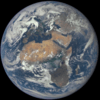 |
 |
|||||
| Sun (star) |
Jupiter (planet) |
Saturn (planet) |
Uranus (planet) |
Neptune (planet) |
Earth (planet) |
Venus (planet) |
| Mars (planet) |
Ganymede (moon of Jupiter) |
Titan (moon of Saturn) |
Mercury (planet) |
Callisto (moon of Jupiter) |
Io (moon of Jupiter) |
Moon (moon of Earth) |
 |
||||||
| Europa (moon of Jupiter) |
Triton (moon of Neptune) |
Pluto (Kuiper belt object) |
Titania (moon of Uranus) |
Rhea (moon of Saturn) |
Oberon (moon of Uranus) |
Iapetus (moon of Saturn) |
| Charon (moon of Pluto) |
Umbriel (moon of Uranus) |
Ariel (moon of Uranus) |
Dione (moon of Saturn) |
Tethys (moon of Saturn) |
Ceres (belt asteroid) |
Vesta (belt asteroid) |
| Enceladus (moon of Saturn) |
Miranda (moon of Uranus) |
Proteus (moon of Neptune) |
Mimas (moon of Saturn) |
Hyperion (moon of Saturn) |
Phoebe (moon of Saturn) |
Janus (moon of Saturn) |
| Epimetheus (moon of Saturn) |
Lutetia (belt asteroid) |
Prometheus (moon of Saturn) |
Pandora (moon of Saturn) |
Mathilde (belt asteroid) |
Helene (moon of Saturn) |
Ida (belt asteroid) |
| Phobos (moon of Mars) |
Deimos (moon of Mars) |
2014 MU69 (Kuiper Belt object) |
Images for kids
-
The Helix Nebula, a planetary nebula similar to what the Sun will create when it enters its white dwarf stage
-
Overview of the Inner Solar System up to the Jovian System
-
Plot of objects around the Kuiper belt and other asteroid populations, the J, S, U and N denotes Jupiter, Saturn, Uranus and Neptune
-
Comet Hale–Bopp seen in 1997
-
Beyond the heliosphere is the interstellar medium, consisting of various clouds of gases. The Solar System currently moves through the Local Interstellar Cloud, here shown along with neighbouring clouds and the two closest unaided visible stars.
-
Buzz Aldrin on the Moon during the Apollo 11 mission
See also
 In Spanish: Sistema solar para niños
In Spanish: Sistema solar para niños



